9 things I've learned since cooking with cast iron — seasoning, cleaning and more
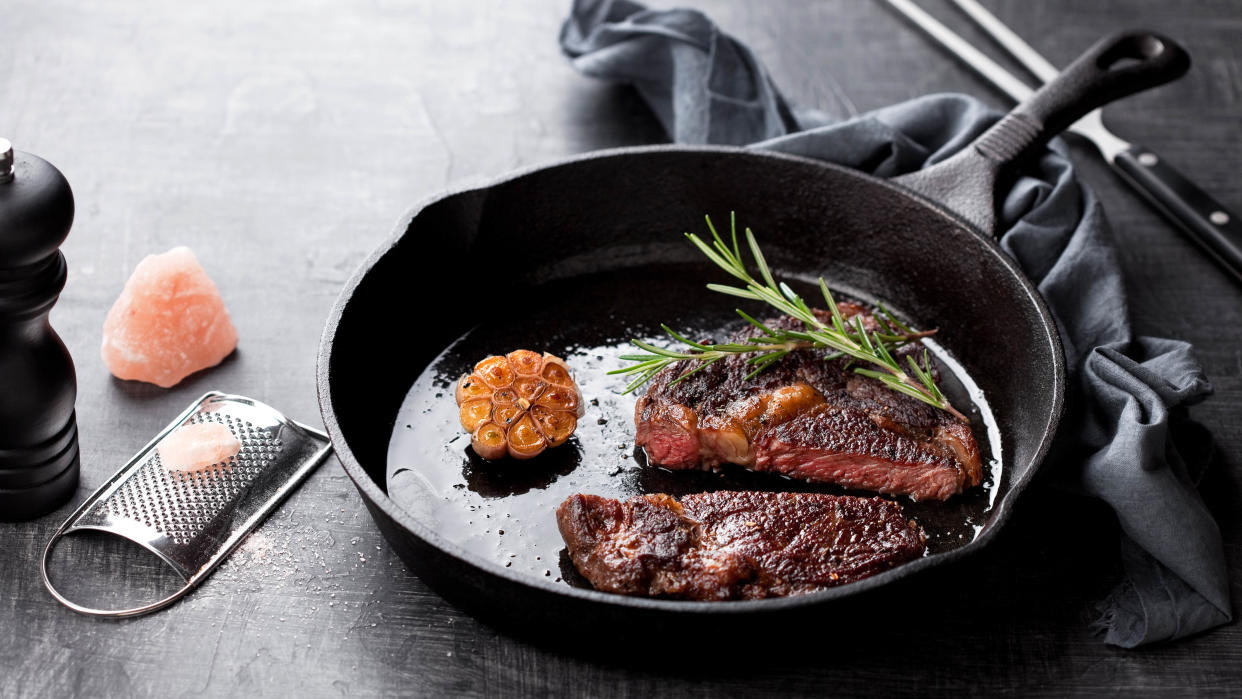
The best cast iron skillets might seem like a daunting piece of kitchen cookware. This sleek black pan that looks closer to a rock than a piece of metal is incredibly heavy and can be cumbersome. People often don’t realize how difficult it is to use one and end up damaging it before they even find its true potential. But thankfully, a cast iron pan or pot can rarely be truly ruined, since it only needs a little bit of tender loving care to bring it back to life.
But, the difficulty shouldn’t deter you from picking one up since it can genuinely raise your cooking game. When seasoned well, it can make for an effective non-stick pan and produce a delicious char. So after years of working with cast iron, here are our 9 tips on making the most out of this fantastic cooking vessel, which we wish we'd known sooner.
1. Importance of seasoning
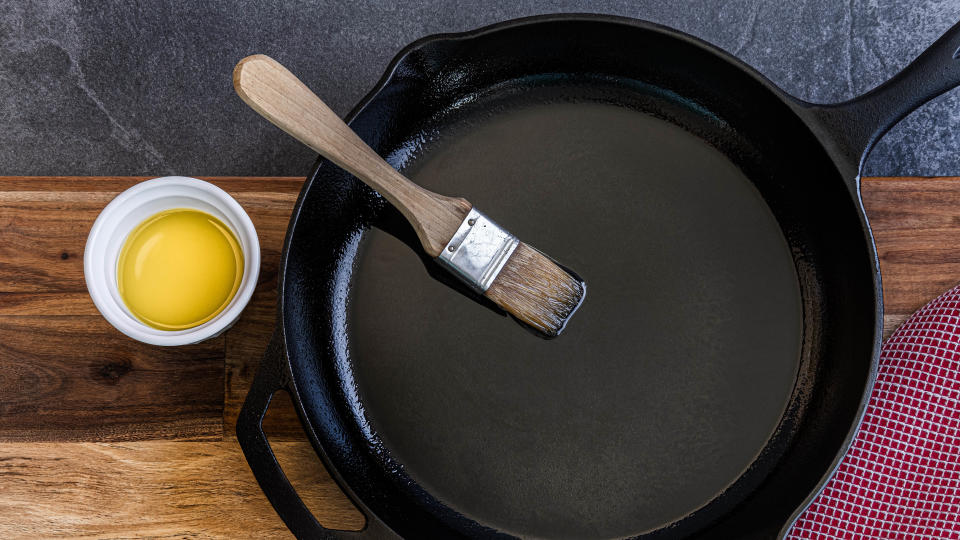
New cast iron pans come from the factory with a rough texture from the sand molds used. However, if you take a close look at an older pan, you’ll notice that they are a lot smoother, some even glass-like, which comes from proper seasoning.
Seasoning is the process of cooking oil in your pan. This produces a smoother texture and leads to a non-stick pan perfect for cooking delicate items like eggs. If you don’t season, all of those nooks and crannies are left exposed, causing food to stick.
2. How to season
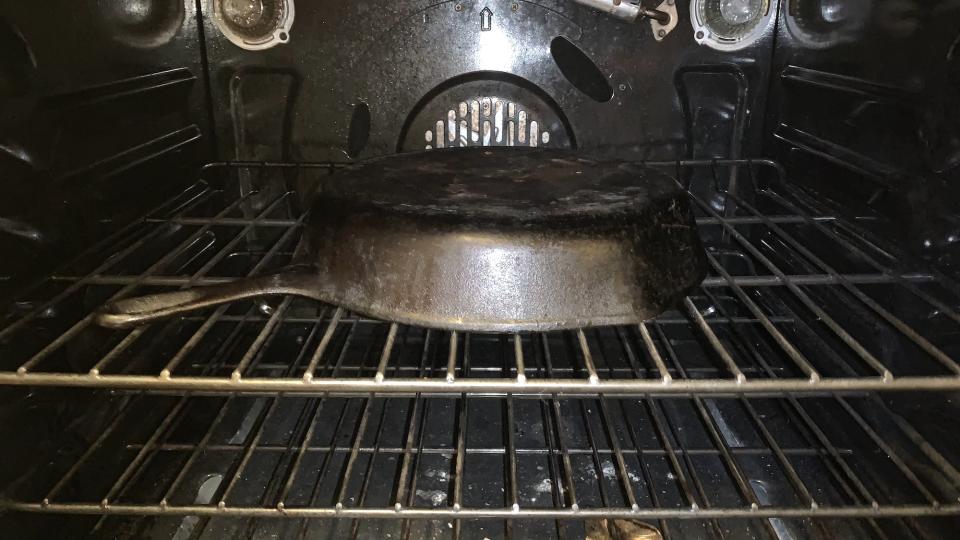
When you first get your skillet, you’ll want to season it before using it to cook. This is the cast even if it arrives pre-seasoned. The first step is cleaning it really well with soap and warm water to make sure you get off all of that gunk and sand left from the factory. Really scrub it and don’t be gentle, you want it to be the cleanest your cast iron will ever be.
After this, you'll want pour a little bit of oil into your cast iron skillet. And when we say a little, we mean it; no more than 1-2 tablespoons. With a paper towel, wipe that oil all over the pan inside and out. You want a very thin coating of oil. When in doubt, wipe more off because it shouldn’t look greasy. Place the pan face down in the oven (preheated to 400-450 degrees Fahrenheit for most oils) and let the oil polymerize for an hour. Let the pan cool before handling again and repeat if necessary. The pan should feel smooth once your seasoning is up to scratch. For full step-by-step guidance, see how to season a cast iron skillet.
3. Best seasoning oil
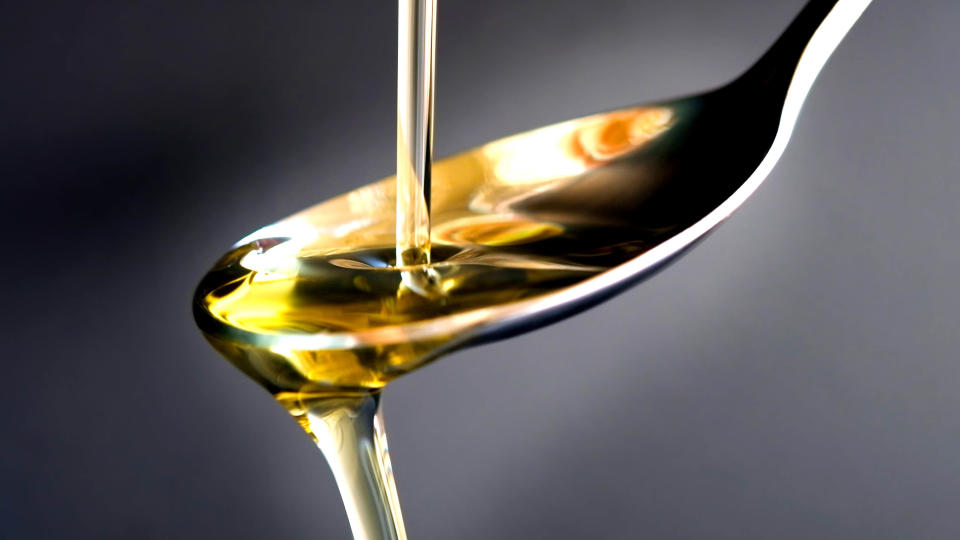
In a seasoning oil, you want one that has a really high smoke point, which is the temperature at which it starts to smoke and break down. Depending on the oil you use, you’ll want to put the oven at the corresponding temperature. Sunflower, peanut, or canola all have a smoke point of around 450 degrees Fahrenheit, while refined avocado and safflower oil are both around 500 degrees.
Over the years, we’ve tested and tried different types of oil for seasoning but canola oil is what we often have on hand. Though it might not have as high a smoke point as some of the fancier options, it will still work in a jiffy. No matter which oil you choose, you always want to make sure you don’t have any oil pooling as you season. These extra thick puddles won’t polymerize properly and over time, they will become sticky.
4. Cleaning without soap
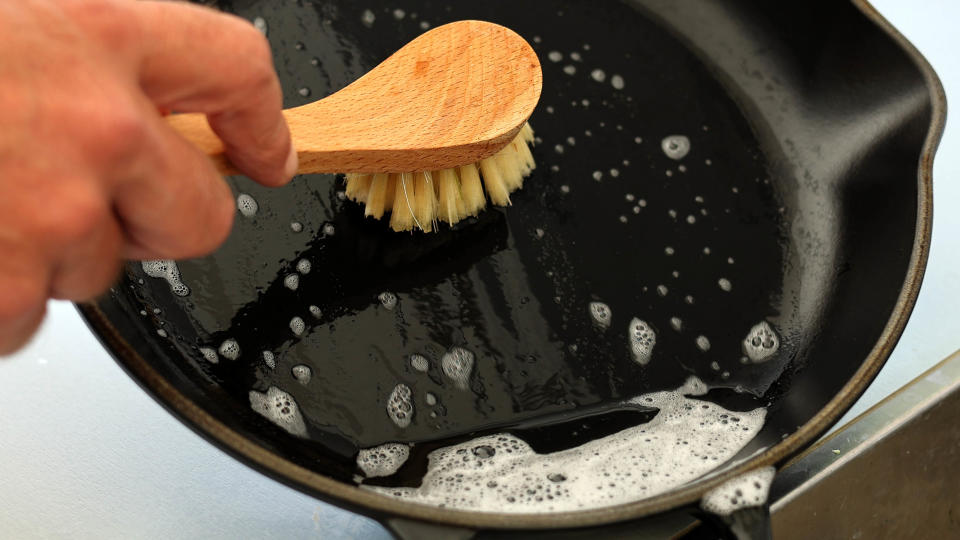
Once your cast iron is properly seasoned, you never want to wash it with soap. The reason: the soap is going to remove your oil layer and ruin all your hard work. To properly clean your cast iron and make sure the seasoning is maintained, you should run it under hot water and dry it immediately after use. Never let it soak and never put it in a dishwasher because ongoing moisture exposure will remove the oil and encourage rust.
To dry it, just use a paper towel or put it on a turned-on stovetop to evaporate the water. If you start to see black specks on the towel for the prior method, don't worry. It might look like dirt but it's just part of the seasoning coming off. If your pan gets really grimy, you can absolutely clean it with a little bit of gentle dish soap, just make sure to season afterwards if you wash the protective layer away.
For full detail, here's how to clean a cast iron skillet.
5. The joys of cleaning tools
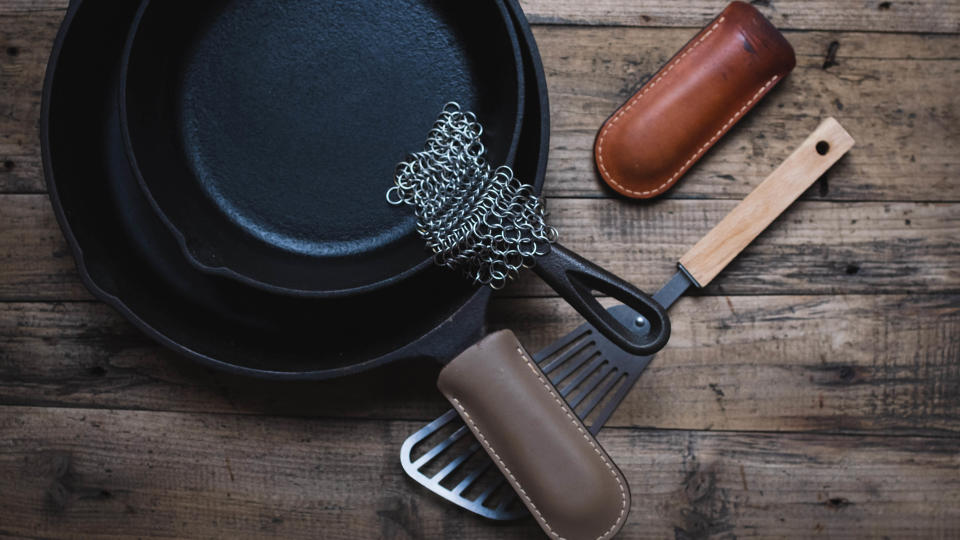
To clean your cast iron, there are a few tools you can buy to make the job a bit easier. We love using this Cast Iron Cleaner Chainmail Scrubber ($16, Amazon) that’s basically a piece of chain mail on a rubber knob. It lets you rub out any gunked-on food and debris without too much worry you’ll ruin the seasoning. There’s also the option to buy a pan scraper that comes with many scrubbers made of plastic. We use this to clean the corners or to dislodge stubborn food debris.
A dish scrubber, like this 3 Pack Kitchen Dish Brush ($11, Amazon), is what I would use to clean on any given day. It’s not going to be good for crusty deep cleans, that’s what your metal scrubber is for, but it’s fantastic at dealing with daily use.
6. Never too far gone
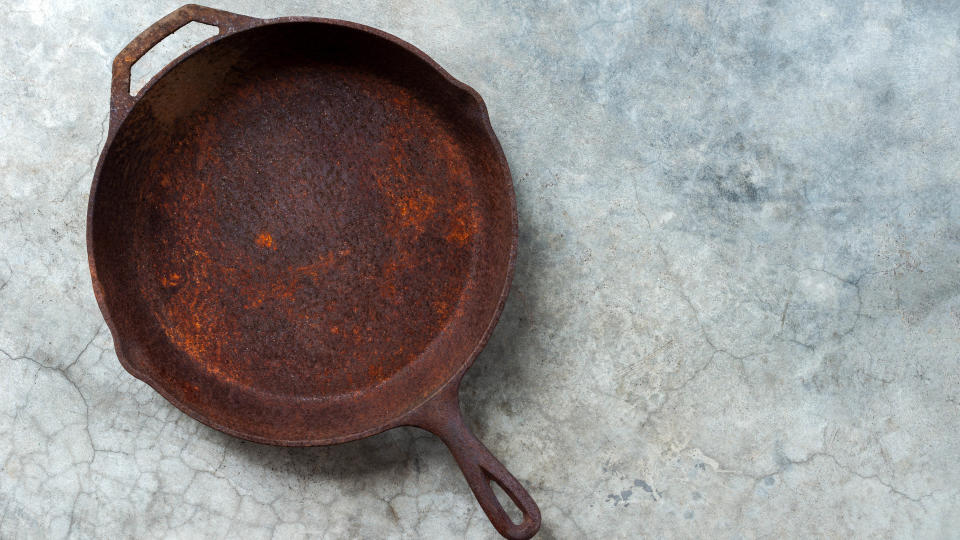
A cast iron pan can handle years of wear and tear without becoming useless. It's ultimately built to last. Even if your pan is completely orange from rust, it can still be saved. You can use coarse salt, spreading it around the pan with a halved potato to get your pan clean again.
If you treat your pan with respect, cleaning it and seasoning it after every use, it might end up outlasting you. We’ve known families that have passed on cast iron cookware from generation to generation, all while still keeping its shape and texture.
7. Only go as large as you need to
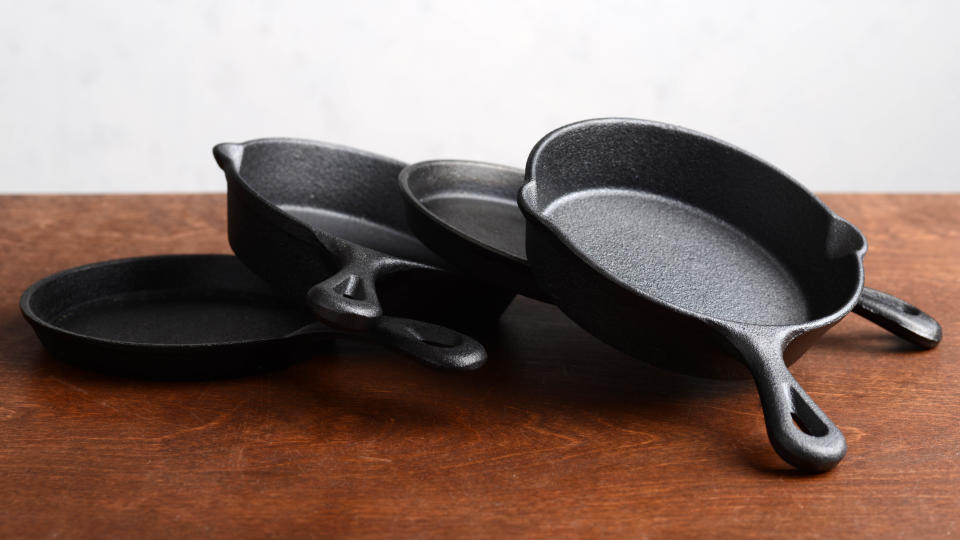
Though cast iron may not look heavy, it is made from pig iron which is the product of smelting iron ore. It’s incredibly dense and adds a lot of weight in even small packages.
So when purchasing your first cast iron, make sure it's not something too big, so you can handle it. Going from an eight-inch pan to a 10-inch will add pounds of weight. And don’t even get me started on Dutch ovens which will bring the workout to your kitchen.
8. Foods to avoid
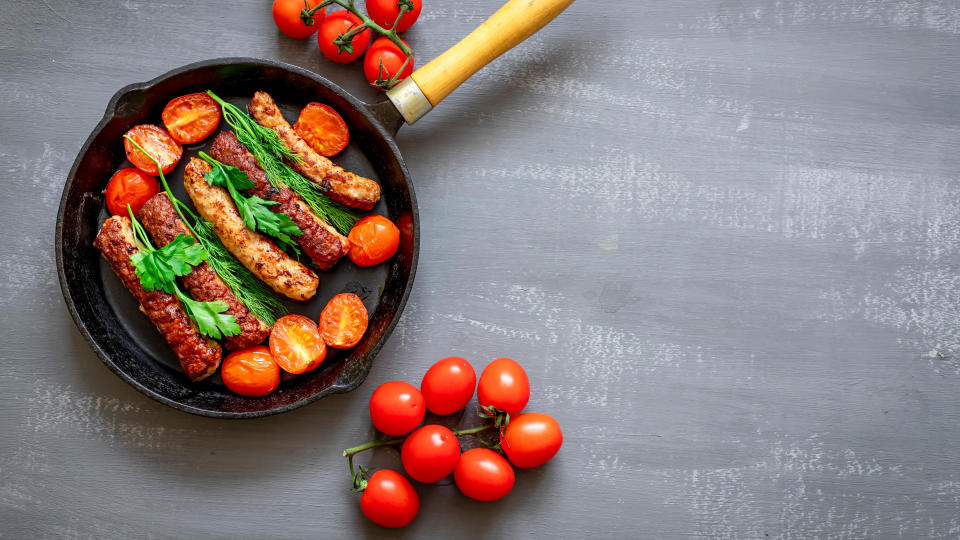
A cast iron pan is perfect for a plethora of meals, but some types of foods can end up potentially damaging your cookware. There is a theory passed down from chef to chef that acidic foods like tomatoes and lemons can break down your seasoning faster than other foods.
Many will instead use an enameled pan to cook dishes with these ingredients. While we have no evidence, just intuition, we generally avoid cooking food like pasta sauce or chili in our cast iron.
Here are 6 foods you should never cook in a cast iron skillet.
9. Cast iron… on a grill?
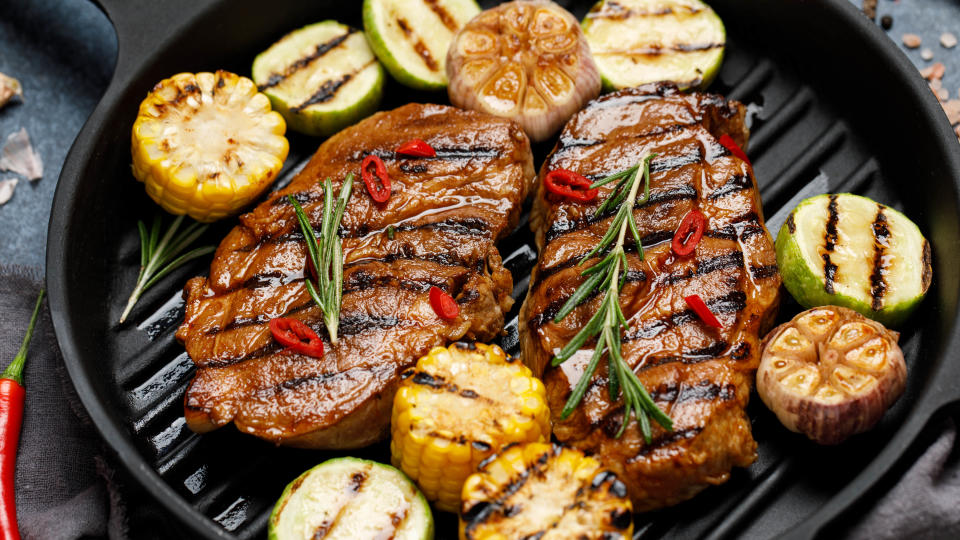
We love that charred, crispy flavor that you get on the best grills, but some smaller foods can fall through the grate.
After testing every trick you can think of, we’ve found the best results from using cast iron cookware directly on top of the grate on a grill. Brussel sprouts gain a perfect char and you can be a lot less careful when flipping shrimp.